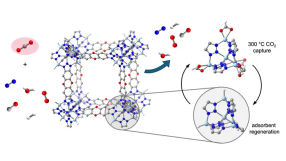Does size matter?
The largest electrical networks are not the best
There is an optimum size for electrical networks if what is being considered is the risk of a blackout. This is the conclusion reached by a scientific study done by researchers at Universidad Carlos III in Madrid (UC3M); the study analyzes the dynamics of these complex infrastructures.
In 1928, the British biologist and geneticist John Haldane wrote the essay “On being the right size” in which he stated that “For every type of animal there is a most convenient size, and a large change in size inevitably carries with it a change of form”. The application of Haldane’s Principle spread to fields like physiology and paleontology, and there was speculation that it could be used with institutions and social organizations, as well. And that is precisely what these researchers have done with social infrastructures as complex as electrical networks. In light of Haldane’s comments, the scientists wondered if the expansion of these networks should continue or if, on the contrary, there is an optimum adequate size for their correct functioning. The answer is yes, according to the results of the power network model that these UC3M scientists, in collaboration with researchers at the University of Alaska Fairbanks and Iowa State University (both in the USA), used in the study, which was recently published in the journal Chaos.
To sum up: size matters if the risk of a blackout is being taken into account. “Risk is defined as the product of the probability of failure multiplied by the cost it generates,” explains researcher Benjamín Carreras, the 2014 Chair of Excellence in UC3M’s Physics Department. “When small networks join together, a lot of local black-outs are avoided, generally reducing costs; in contrast, huge black-outs occur in the large networks and, although they are very infrequent, they have an enormous cost, which limits the acceptable size for networks of this kind,” states Carreras, who makes this important point regarding the cost-benefit ratio, “The short-term benefits are mainly for the electrical companies, but it is not very clear who pays for the large black-outs, so there may not be a lot of interest in changing things.”
To reach these conclusions the researchers simulated the operation of an electrical network and statistically measured the risk of failures in the energy supply in function of the size of the infrastructures. To do this, they maintained a set of fixed conditions, such as reliability (the probability of the failure of a component), the network’s administration (how an increase in electrical demand is managed) and the environmental conditions (the influence of earthquakes, storms, etc.).
Reliability, operations and environment
The two first factors are the most important, according to the researchers, although the third is steadily growing in importance. “In a recent study it was shown that, in recent decades, there has been a systematic increase in failures in the grid due to weather conditions, probably because of climate change. We are talking about an 80% increase since 2003,” points out Carreras. Nevertheless, everything depends on one’s point of view; really, localized blackouts caused by storms are not necessarily bad, according to the researcher, because when they are repaired it is possible to make the systems more resistant to general blackouts.
During this study, the researchers took parameters from the electrical grid in the United States, but their models and results can be extrapolated to any type of electrical network. In fact, there are important parallelisms with other types of infrastructures, and even with economic systems: “In these systems, “blackouts” are known as “crises” and their size has increased with globalization, so it would be very interesting to apply these ideas to economic models,” they note. Their conclusions lead to questioning the idea of “the bigger, the better”. At least when it comes to electrical grids.
Other news from the department science

Get the chemical industry in your inbox
From now on, don't miss a thing: Our newsletter for the chemical industry, analytics, lab technology and process engineering brings you up to date every Tuesday and Thursday. The latest industry news, product highlights and innovations - compact and easy to understand in your inbox. Researched by us so you don't have to.


























































